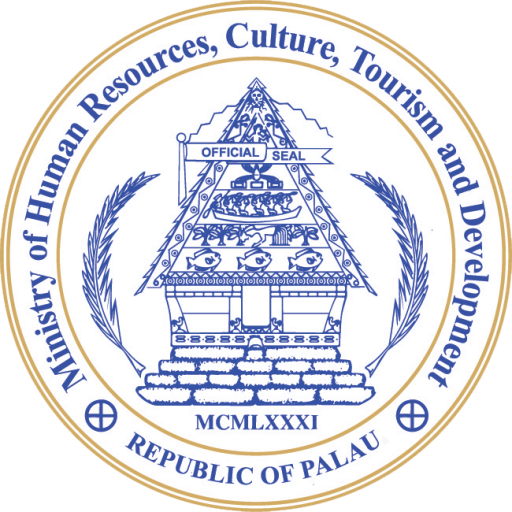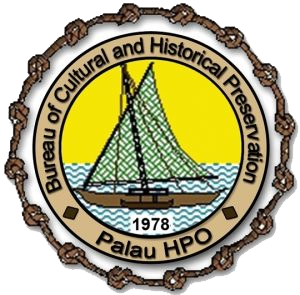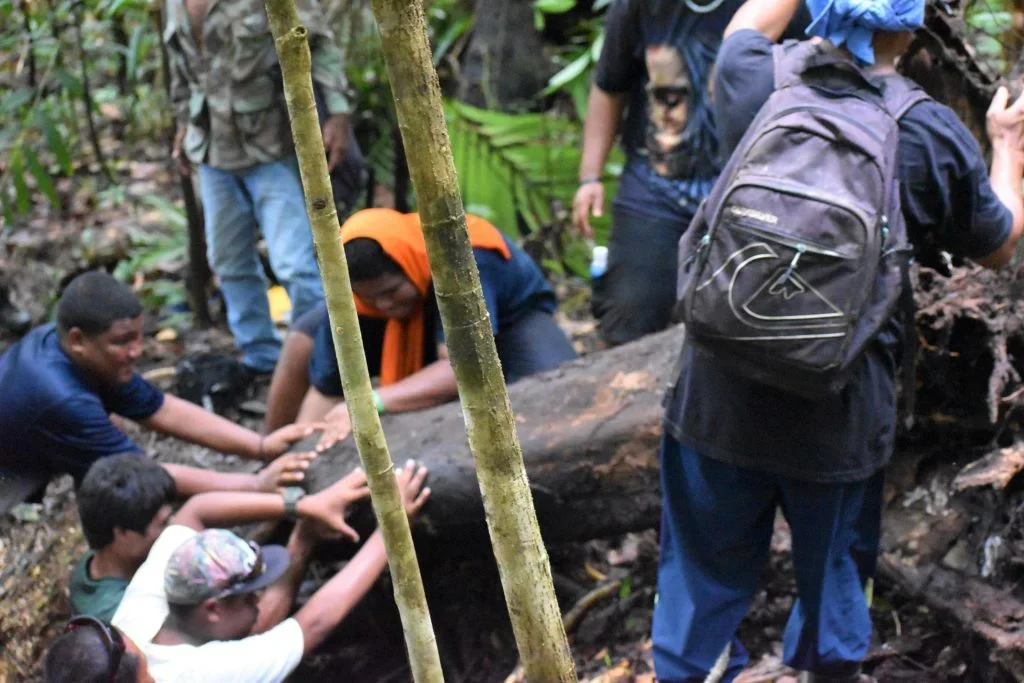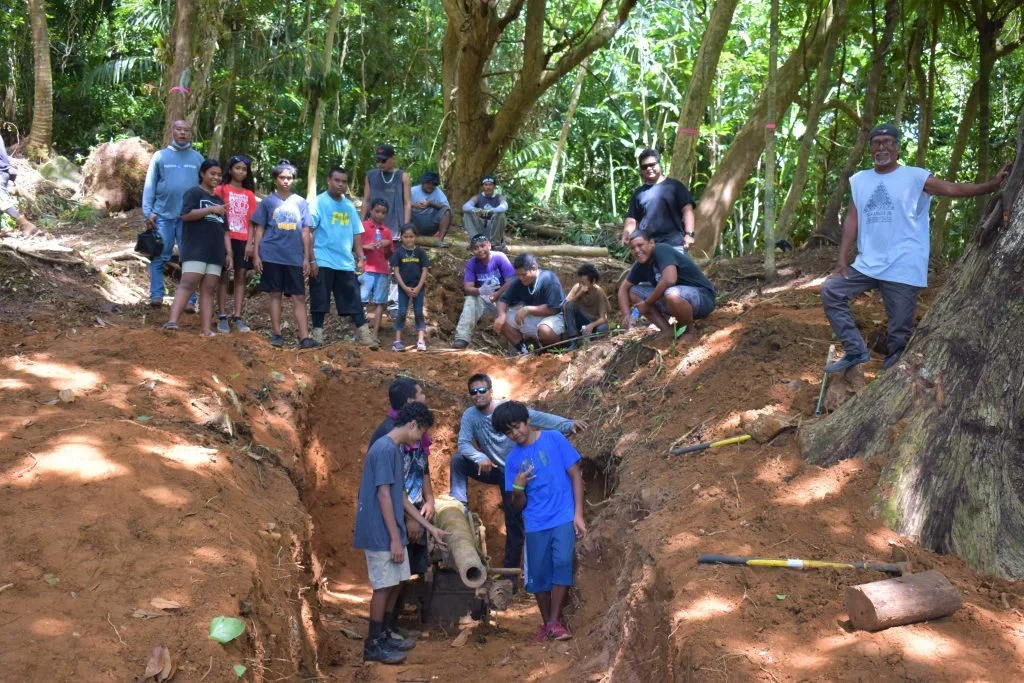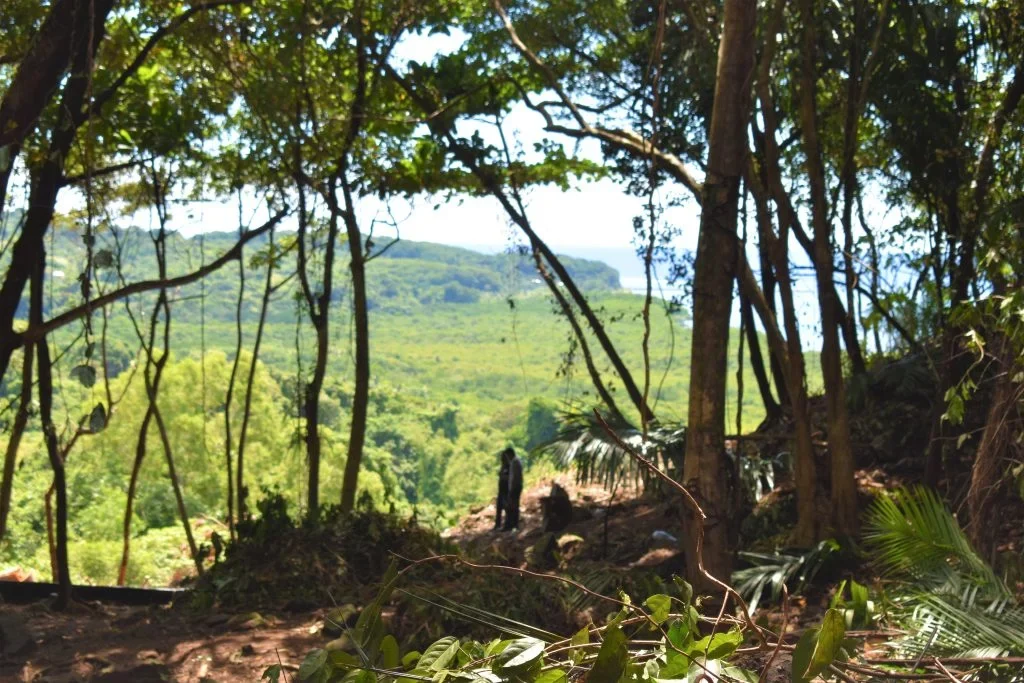Photo by McMichael Mutok Jr. (July 2022)
Boes Er A Mekemad
(Japanese Defense Position) Defending the Coastlines of Ngchesar and Melekeok
- Roischesar
Site Type
Date Registered
Site No
History
In recognition of its significance, Boes er a Mekemad (Japanese Defense Position) has been listed on the Palau Register of Historic Places on October 18, 2005. Through preservation, study, and interpretation, the site can serve to educate future generations concerning the historical and cultural heritage of the Palauan people and the state of Ngchesar. During World War II, the Japanese military fortified Ngchesar in anticipation of the American invasion of Babeldaob. The Japanese constructed gun emplacements and dug defensive trenches and tunnels on the ridge of Roischesar. This to show that these historic remains of World War II are in need of preserving and that there is evidence shown that Ngchesar state was included in the World War II battlefield.
This significant historic World War II site called Boes er a Mekemad ( Japanese Defense Position ) identified as site number B:NC-5:9, is located below north of Roischesar facing Melekeok. A Ngchesar State survey collected by the Bureau of Arts and Culture in 2001 describe that this site contains a coastal defense gun, tunnels and a series of trenches. The area is within a forest where a person has a good view of the coast to Melekeok.
The coastal defense gun is located within a one-meter hole facing the water. Behind it are two tunnels dug into the slope that have collapsed entrances. Beside the tunnels to the south is a short trench which may have been connected to the tunnel but the entrance had collapsed. Beside the defense gun to the north is a trench with a “Y” shape that goes down the slope for few meters. A much deeper and longer trench is to the northwest of the gun. It has a depth of more than one meter with a width of 1/2 a meter. The trench runs above a steep slope in east-west direction. Two trenches branch north to the edge of the steep slope. Two tunnels still intact had been dug into the south wall of the main trench and with each opening facing each short trench.
Tia el Boes er a Mekemad ( Japanese Defense Position ) a siliseb er a omsengelel a klalo er a Ibetel a Cherechar (Palau Register of Historic Places) er se er a October 18, 2005. Tia el olsechall a ta er a mekreos el ibetel a cherechar er a Belau, el kmal klou a ultutelel el olsechall el mo er a rechad me a beluu er a Ngchesar. Tia el olsechall a ngar er ngii a chimo el boes ( Coastal Defense Gun ) el dechor er a chelsel a kliokl me a dirrek el ngii a bokungo, a ochotii a klungel el mle urrerir a rsoldau er a Siabal el meliuekl er a Belau el mirruul aika el klekedall er a mekemad ( Defense Fortification ) el ulemtech a lemei a mekedmekil a Merikel el nga er a Belau. Me ng klou el belkul tia el olsechall el kirel el mecheluolu me ng diak el metemall. E medechel el olechotel a mla er ngii el rak er a rekishi er a beluulerchad (WWII era), me a Ngchesar a dirrek el mlo soiseb er a chelsel er a mekemad.
CHELDECHEDUCH
Tia el olsechall el Japanese Defense Position el lambang er ngii a B:NC-5:9, a mle boes er a mekemad el ngar er a bitrongel a Roischesar, el chemau el bedul a Melekeok. A survey er a Ngchesar state el lurruul er ngii a Bureau of Arts and Culture er a rak er a 2001, a milsaod er ngii el olsechall el kmo ng mle Japanese Defense Position el ngar er eou er a mobedul a diluches er a Roischesar. E kmal dirk cherrungel a teletelel el ngar er ngii a boes (coastal defense gun), tunnels (bokungo), me a sinchi (trenches). Ng di sebeched el ungil mesang a medal Ngchesar el mo er a Melekeok.
Tia el boes a dechor er a chelsel a kliokl, el bekord el ta el metor a klungel el meliuekl, el chemau el bedul a daob. A mobedul uriul er ngii a teblong el bokungo el mla mongkong a medal. Ngar er ngii a kedeb el sinchi (dango) el mo bedul a dimes er aika el bokungo el locha ulemech el mei er aika el bokungo e ng di mla medakl a medal. A kuk mobedul a diluches er tia el boes a dirrek el sinchi el ko er a teletelel a “Y” el merael el bedul eou el di mo obangel er a melengel. A mobedul a diluches-ngebard er tia el boes a klou el kliokl (sinchi) el bekord 1 meter a delechel e 1/2 meter a tengel, e kliokl el ngar er a ongos el mo bedul a ngebard a delecherul. E ngar er ngii a kldei el rechelel el teblong a kliis el mo er a ullebengelel tia el chutem. Ngar er ngii a teblo el bokungo (tunnels) el ngar er a ullebengelel tia el kliokl (sinchi) er a mobedul a dimes, el chemau el bedul aika el teblo el rechelel el kliokl el bedul a diluches el mocheru er a ullebengelel tia el kedidai el chutem.
Map of the Japanese Coastal Defense Position (Olsudong et al 2001, 150)
Compiled by McMichael Mutok Jr.
Palau National Register of Historic Places
Bureau of Cultural and Historical Preservation
Sign up to receive the BCHP monthly newsletter.
FY’20 Site Rehabilitation and Conservation Project
The site rehabilitation and conservation project of Boes er a Mekemad ( Japanese Defense Position ) located in Roischesar commence on June 07, 2022 and completed on July 15, 2022. The project involved clearing overgrowth trees, vines, and bushes around the site. They accomlished this by removing moss, dirt and rusts from the Coastal Defense Gun and apply a stop rust clear paint in order to prevent the WWII remains from corroding. Other modification such as digging the trench are supervised by village elders and monitored by the Bureau. They also built a 3ft. x 4ft interpretive signboard using traditional materials at the site.
The main purpose of this project is to educate and motivate the public, especially the affected villagers to realize the importance of the site and its potential economic benefits. Through the project, the concerned executives, traditional leaders and individuals could be reminded once again that these precious resources are theirs and should be maintained for many reasons: for present and future generations to learn and enjoy; for continuous education; for heritage tourism; and for economic development.
Governor Duane Hideo and the community of Ngchesar State feel fortunate to have one of their precious sites rehabilitated and have access for visitors. They believe that this is one way for others to learn about their state’s history and thanked the Bureau of Cultural and Historical Preservation under the Ministry of Human Resources, Culture, Tourism and Development for their on-going efforts in helping small communities little by little with their financial assistance.
Source
Olsudong, Rita. Calvin T. Emesiochel. Errolflynn T. Kloulchad. 2001. Inventory of Cultural and Historical Sites and Collections of Oral History in Ngiwal and Ngchesar States. Vol. I : Inventory of Cultural Sites. pp. 149-150.
CODE OF CONDUCT
Given the importance of this site to Palauans in terms of their history and culture and the concerns that exist in regard to its future, those visiting the site should not engage in any type of behavior or activity that disturbs the integrity of this site or diminishes the respect that should be accorded to it.
PALAU HISTORIC PRESERVATION GUIDELINES
Because of the importance and sensitivity surrounding this and all historical registered sites, the Palau Historic Preservation Office would like to emphasize proper conduct for visiting a site through the following guidelines.
1) Remember that many sites include culturally sensitive areas and therefore behavior should be always be respectful.
2) Remember to take everything you bring to the site with you when you leave.
3) Do not remove anything from the site. Although you may not think something is significant to the site, all pieces make up the whole.
Location of Boes er a Mekemad (Japanese Defense Position)
Compiled by McMichael Mutok Jr.
Palau National Register of Historic Places
Bureau of Cultural and Historical Preservation
